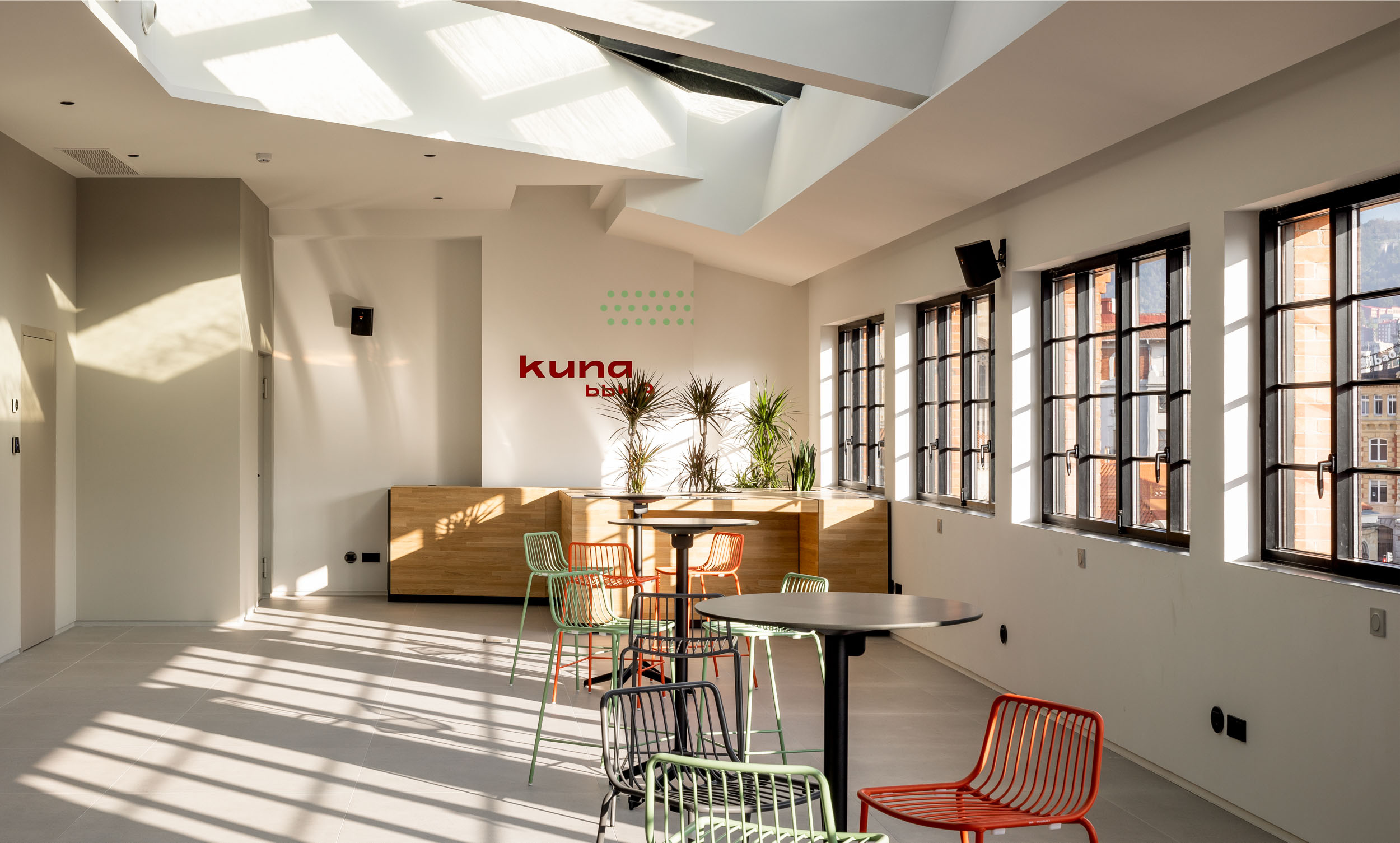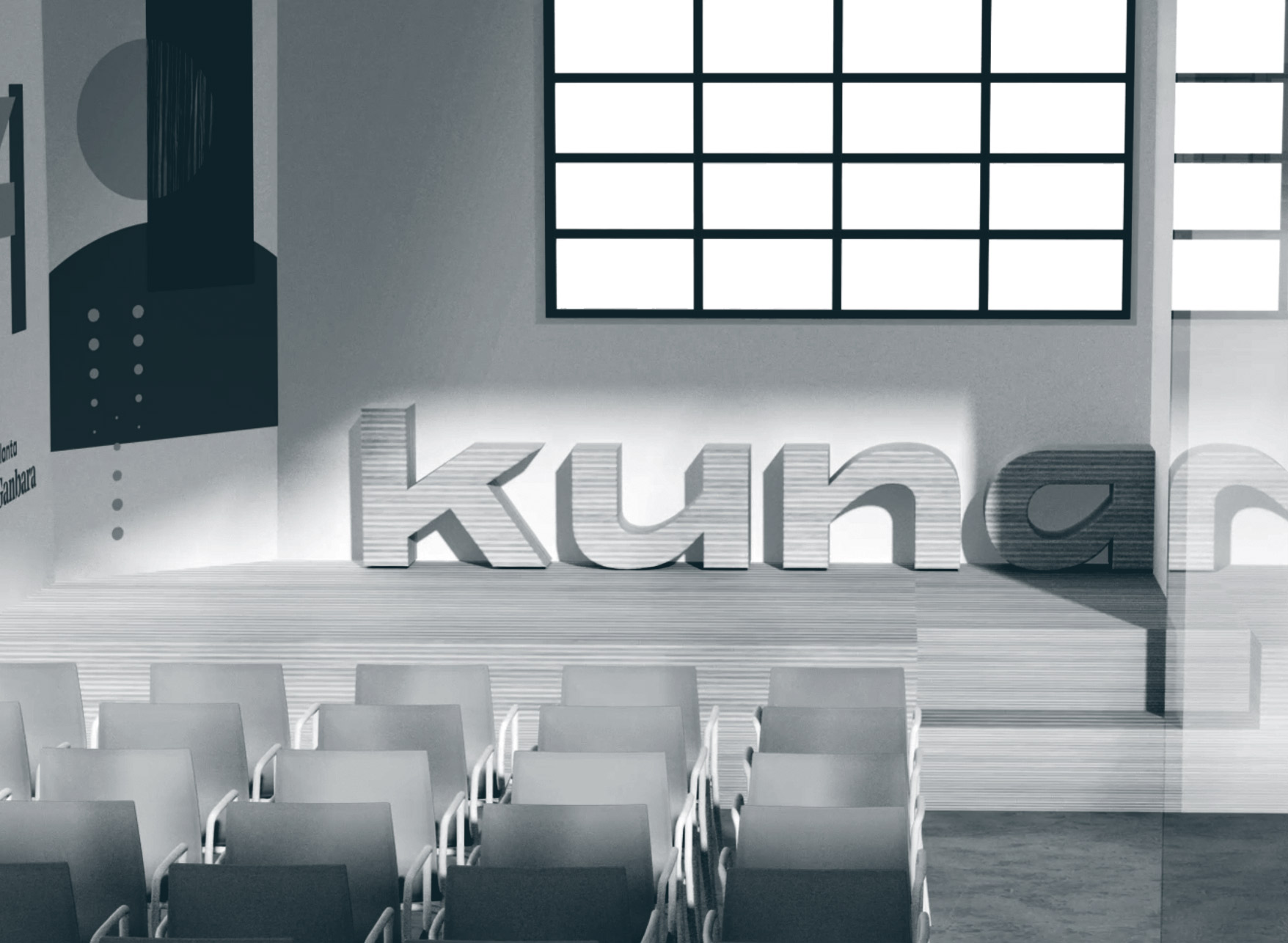
South Korea is also familiar with BBK Kuna.
Last October, Korean journalist Eugenie Park travelled around Europe visiting and getting to know different European social innovation systems, among which was BBK Kuna.
After the visit to BBK Kuna, the House of SDGs, and an in-depth interview with our team, we can share with you the article published in Eroun magazine.
For those who know Korean, here is the link to the article. For those of us who are still learning Korean, here is a short summary of the article.
매우 감사합니다

BBK Kuna, a positive influence innovating Bilbao
Bilbao is the largest city in the Basque Country located in the north of Spain. A place where anyone seeking to find cases of urban innovation and urban regeneration should have visited at least once. Bilbao, which grew as an industrial and port city from the 15th century, experienced a history of great decline. Well into the 70s, the hub for the steel and shipbuilding industries moved to Asia, and Bilbao began to wane. To make things worse, Bilbao also received the name of the ‘City of the Dead’ due to how it suffered from the terrorist attacks of the Basque separatists and even a great flood.
The Guggenheim Museum has had much to do with reviving this plummeting Bilbao. As a result of the cooperation between wealthy individuals and Basque politicians, the city managed to attract the museum in 1997, and it stands as a symbol of Bilbao. Bringing along the unprecedented arrival of tourism, bringing life back to the streets surrounding the Nervión estuary next to the art museum, transport was developed and the unemployment rate gradually fell. Which coined the term the “Bilbao Effect”, which entails saving the region by means of symbolic cultural infrastructures. Bilbao is currently known as one of the wealthiest cities in Spain with a high level of financial independence.
However, if you think Bilbao has made it this far just with the Guggenheim Museum, you would be mistaken. Attracting the cultural industry was just the beginning. In the light of this, Bilbao endeavoured to consolidate its internal stability. Public transport infrastructures were developed, such as the metro and tram lines and the expansion of pedestrian areas. Polluted rivers have been recovered in order to improve water quality, and the collaboration of public-private expert group of the Basque Country ‘Bilbao Metropoli 30’ and the public regional development organisation ‘Bilbao Ría 2000’ have been working relentlessly to create a liveable city.
Is it due to this history? Proactiveness to create a liveable society seems to be imprinted like DNA into the people of this region. The Social Innovation Centre of Bilbao, created by the BBK Foundation, is one example. The reporter visited the site last October after listening to a local resident say the centre had recently been set up last year, and it was implementing several social innovation regional development programmes.
From a centenary care centre to a social innovation space
BBK Kuna is located along the road to the historical quarter, 2.3 kms from the Guggenheim Museum. Placed in the middle of the outside area of the modernist four-storey orange coloured building, is a guardian taking care of two children. A sculpture which tells the story of what the building was used for in the past.
The former name of BBK Kuna is ‘Casa Cuna’. Literally translated, it means ‘the house of the cradle’. The origin of this name dates back to 1914. At the end of the 19th century, when Bilbao was undergoing radical changes after the Spanish Civil War, there was a boom in the development of the mines near the city and many immigrants arrived looking for work as the industries began to develop. Most were couples and both had to work in order to feed their families.
Casa Kuna was a public assistance centre created for families who needed a place to leave their children while they were at work. It was designed and built by the Basque architect Ricardo Bastida with the support of the Caja de Ahorros y Monte de Piedad Municipal de Bilbao, predecessor of the current BBK Foundation. At present, the BBK Foundation is the majority shareholder (57% stake) in Kutxabank, a bank in the Basque Country, and uses the dividends to undertake social projects related to ①inclusion, equality and participation ②culture ③entrepreneurship and education ④the environment.
Therefore, it can be said that Casa Kuna is an innovative space which has contributed to attaining the ‘balance between work and life’ since the beginning of the 20th century. From the time it was established, it has become a base for taking care of children in the region and has been active in the region for 100 years. According to Eider Inunciaga, director of BBK Kuna, who presented the history of the building to the reporter, Casa Kuna has played a role associated with medical care and wellbeing, as well as caretaking.
It is only recently that the care centre has been transformed into a social innovation centre. In 2016, the BBK Foundation decided that Casa Kuna had concluded its work and closed its doors. Over time, the number of centres for taking care of children has increased, so the aim was to give it a new role. The BBK Foundation conducted a competition of ideas in order to make use of the space and 35 proposals were received. From among these proposals, the current local social innovation activation model was adopted, and it was inaugurated again in 2021.
A space for the Sustainable Development Goals, open for all
The subtitle of BBK Kuna is ‘Garapen jasangarrirako helburuen etxea’. This can be seen written on the first screen of the large monitor upon entering the building. The Sustainable Development Goals (SDG) are the goals adopted by the United Nations in 2015 to end worldwide poverty, protect the planet and ensure peace and prosperity for all by 2030. The images and explanations contained in the individual Sustainable Development Goals (SDG) greet visitors on each floor of the BBK Kuna. “As part of our commitment to build a better world and community, the BBK Foundation has decided to work towards the United Nation’s 2030 Goals focussing on sustainable development”, points out Inunciaga. It receives the support of BBK Kuna Institutoa, a thinktank of experts from different fields.
The first basement floor, is a space for small exhibitions and may be used not only for exhibitions but also for presentations and meetings. When the reporter left, preparation was being made for an exhibition of works from local children. Recently, a sustainable fashion exhibition has also been held. The first floor houses a cafeteria for neighbours to conveniently come in and out and several panels and structures have been set up to explain the significance of the space. The second floor is a shared office space which may be used by the consortiums which participate in the various BBK Kuna collaboration projects, and on the third floor is the conference space in which to listen to several of the educational programmes provided by BBK Kuna. On the fourth floor, there is a stage and a practical space for special events.
Director Inunciaga has highlighted that “everything that takes place in BBK Kuna is related to the Sustainable Development Goals”. In order to do this, she outlined that projects are planned and executed to respond to the social problems with the participation of leading actors from different fields such as businesses, universities, neighbours and organisations. Constantly working to create a citizens’ participation model. These endeavours have led to the setting up of a Resident Advisory Committee (Neighbourhood Consultative Council).
“We sent letters to every house in the neighbourhood. A total of 11,000 people asked to become committee members. As a result, about 100 people answered that they wanted to participate and we selected 21 people by drawing lots. This committee, made up by several people, among these a psychiatrist and a 65-year-old housewife, who undertook the role of BBK Kuna collaborators in the process of promoting the project, and now that the one-year mandate of the committee has come to an end, a new committee will lead it again next year”.
The activities held in the BBK Kuna, which opened its doors in September 2021 and celebrates its first anniversary this year, are not only limited to the building. Given that it has led several campaigns throughout the region. Last year, in collaboration with hyperrealism artist Rubén Orozco, a sculpture of a girl whose face barely shows above the water was installed in the Nervión estuary next to the Guggenheim Museum. The artwork, the exposed surface of which varies according to the level of the estuary, contains a message which stresses the need to respond to the climate crisis. This year, a large sculpture was installed in front of the centre’s theatre to shed light upon the need to carry out individual activities to protect the environment, such as consumption, recycling and the use of public transport.
BBK Kuna is permeating across Bilbao to inform and implement the Sustainable Development Goals for all, regardless of age or gender. We plan to continue with the positive influence that has existed for more than 100 years since the days of Casa Kuna.
